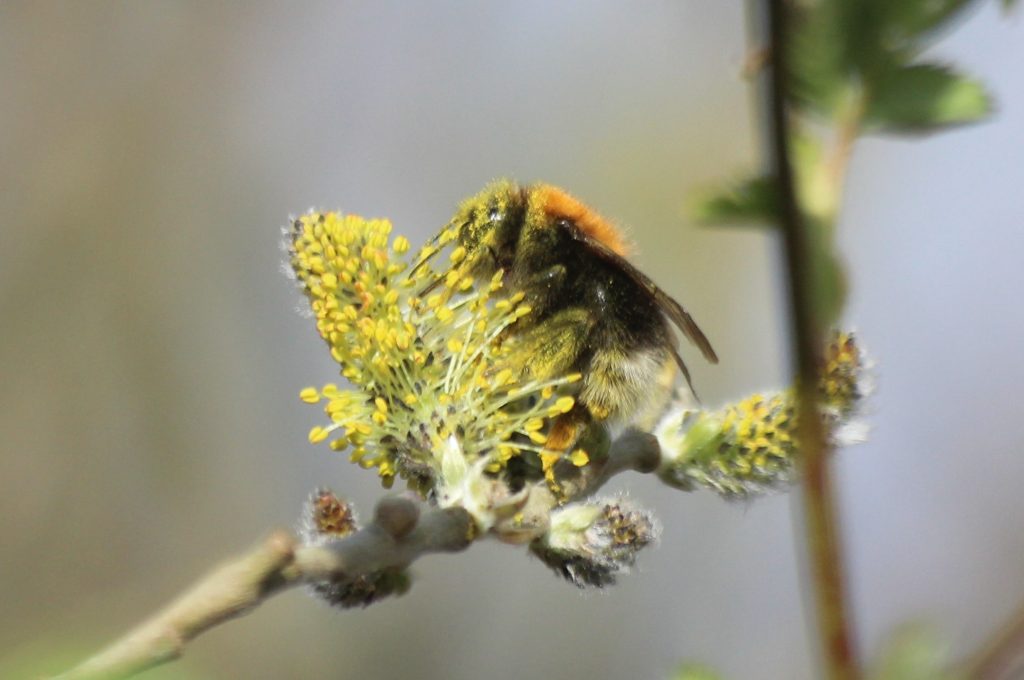By Gavin Ramsay

In July 2001 two scientists at the University of Southampton, Dave Goulson and Ben Darvill, spotted an interesting bee at the edge of the New Forest in Landford, Wiltshire. This male bee, in good condition and likely raised locally, proved to be the first known UK example of the tree bee, Bombus hypnorum. At the time it was an open question whether this species, common on the continent, had flown the 22 miles across the English Channel or had an assisted passage. More recent evidence suggests that there have been many individuals adding genetic diversity to the UK population, strengthening the view that they are crossing the Channel unaided.
The tree bee is easy to spot and has a unique pattern amongst British Bombus species, with its chestnut-black-white pattern from head to tail. Its spread across the UK has been remarkable. Just five years after its discovery there were records right across England and Wales. By 2009 it had reached Edinburgh. By 2015 it was frequent in much of the central belt and had reached the Perth area and Mull. Today it can be found across the NE of Scotland and up a large part of the Great Glen, repeating the pattern of large jumps in range followed by a few years of consolidation and increase in numbers.
Invasive species such as this one can be expected to suffer from inbreeding with few initial founders giving rise to populations over large areas. However this does not appear to be particularly true for the tree bee. One study produced genetic evidence that the UK population is as diverse as the one on the continent, suggesting that we have had repeated waves of colonisation from continental Europe. However another study suggested that there is still some inbreeding as Bombus hypnorum in the UK seems to have lower diversity at the sex locus than other species.
This is said to be the bumble bee most closely associated with man in Scandinavia and this seems also to be the case in the UK. It is most often found nesting in bird boxes, in the eaves of roofs, in sheds and gardens. Some of its nests seem to be placed on top of the nests of other species including birds, mice and wasps. Its cycle runs early with queens commonly on the wing in March and many nests finishing in July. An unusual aspect of its behaviour is that as nests mature males will gather in large numbers, flying in large numbers around entrances.
In areas where it has already become one of the commonest bumble bees, this is the species most likely to be responsible for swarm calls to local beekeepers. All of its characteristics may bring about people noticing its presence: its unusual appearance, its selection of nesting sites close to homes and its behaviour around nests as they mature. Do look out for it and, as with other wild bees, you can contribute to knowledge on its distribution using iRecord.
The spread of Bombus hypnorum across the UK from 2001 to April 2021 (data and maps from National Biodiversity Network).
